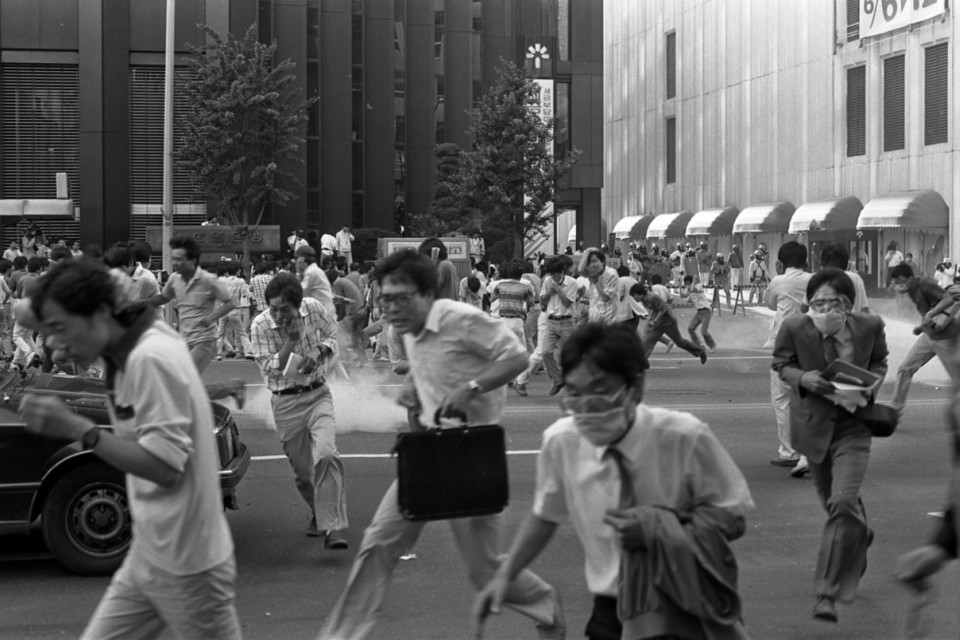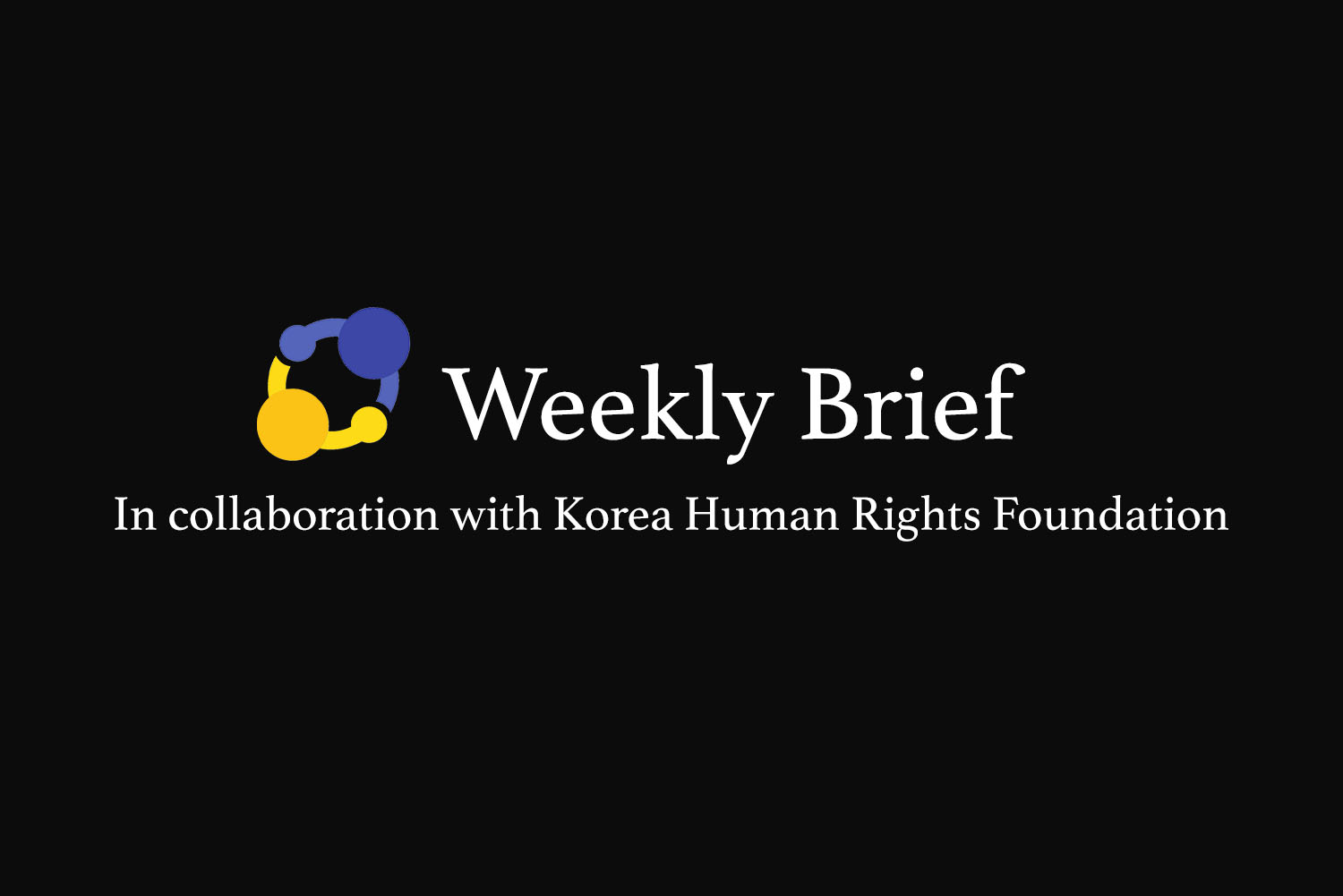
Where Are All the Women in South Korea's Democracy Protests?
Moon Young-me was one of the five million South Koreans estimated to have come out onto the streets in June 1987. She was bare-faced, wearing no makeup or fancy clothing. That was the norm for the student protest culture at the time. She was a 21-year-old history major, a transfer student at Yonsei University, participating in war of a sort.
“The guys would throw stones from the frontlines. And girls would collect the stones,” Moon remembered the student protests against the military dictatorship of Chun Doo-hwan.
“Some girls questioned why they were left behind. They tried to go to the frontlines to throw stones,” She laughed. “I didn’t. I wasn’t good at throwing.” She stayed in the back.
Throwing stones or not, Moon was witness to one of the most iconic moments in South Korean history: the “June Struggles” (although the mass rallies were happening before this month). This was the turning point that many look at today as the beginning of the country’s democracy, at least in the formal sense.
Every June, reminders abound so as to not let the citizens forget. But the reminders come in incomplete pieces, usually highlighting the key “martyrs,” as those who died are often called.
What’s less remembered today are the protesters at the back, those who were less visible behind the frontlines. Many of them included women, who in most student movements could not take leadership roles because of the entrenched patriarchy, even within a movement that was supposed to fight for freedom and equality.
“People usually remember men when you talk about martyrs,” Moon said. “But there were just as many women who fought and died.”

Life inside the protest camp was not without its tribulations and inequalities, especially if you were a woman. At parties, dishwashing was usually relegated to women. Leadership roles were almost always given to men; demonstrations were led, of course, by men.
“No matter how progressive the men were politically, they were really conservative when it came to their ideas about women,” Moon said. “All those male students grew up under a patriarchal culture. At school, in the family, you experienced hierarchy and gender inequality. Patriarchy was just the most naturally accepted culture.”
“We need to eradicate our country of dictatorship, liberate the laborers, and unify the Koreas. The fight for women’s rights is secondary,” Moon remembered the general attitude at the time.
At a student seminar in the winter of 1986, a group of female students at Yonsei wrote up a small petition demanding equal rights. “The male students were taken aback,” Moon laughed. She said they changed a bit, certainly helping more with the dishwashing.
Moon and her female friends even founded a separate student union for women at Yonsei University, because it was hard to assert women’s rights within the existing, patriarchal student union.

The designation of women’s equality as “secondary” bred negligence and insensitivity when it came to an issue that’s still not popularly discussed today — sexual harassment within the student democracy movement.
“There was no critical awareness about sexual harassment,” Moon said. “Women who got abused stayed silent. At least during my time, no woman spoke up. There was an atmosphere of shaming the woman [victim] — you’ll be spitting on your own face, you have to keep this covered up because it would taint the morality of the student movement.”
Seo Myeong-sook, a former student protester in the 70s, recently published a book on a forgotten female activist, highlighting similar issues that Moon mentioned, including sexual abuse, which Seo says was common.
Seo went to Korea University — another elite institution like Yonsei — where male protesters were overwhelmingly dominant in number and leadership. Female students usually brought over the stones, gave the men water, or wiped the blood off them.
In her book, Young-cho Eonni, Seo writes about an eonni (a familiar way to call an older woman) who was a “symbolic figure in the democracy movement,” but largely forgotten today.
“Cheon Young-cho was the bad eonni who introduced me to cigarettes. She was the mentor who opened my eyes to society’s contradictions. She was the intellectual role model who showed me how to put your conscience into action,” Seo wrote.
Today, everyone remembers the likes of Lee Han-yeol, Park Jong-cheol, and other male martyrs who are household names. But nobody remembers Cheon Young-cho.
***
Moon Young-me is now the chief curator at a museum dedicated to one of South Korea’s most famous “democracy martyrs,” Lee Han-yeol. Every June, Yonsei University commemorates his death with huge posters. Memorials are held in his honor and headlines shower praises about the young student who got hit in the head by a police teargas cannister.

At the Lee Han-yeol Memorial Museum in Mapo district, Seoul, Moon works with four other women to make sure her former peer at Yonsei isn’t forgotten. The small two-story space showcases his journals, bloodstained clothes, and even the glasses that fell from his face when he was hit.
“I didn’t know Lee personally,” Moon said. “But I was there that day. There wasn’t anything special about the day.”
Student demonstrations were taking place at various universities, as usual. The smell of teargas filled the air, as usual. Her eyes teared up and her throat clogged up, as usual.
The day refers to June 9, 1987; the day Lee got hit in the head by a teargas canister from the riot police. It’s a moment captured in the iconic Reuters photograph by then-bureau chief Jeong Tae-won, an image that’s now etched into South Korea’s collective memory as an unforgettable symbol of democracy.
While Lee was in the hospital, Moon was already contributing to the nationwide cause of immortalizing the young man in a coma. She helped paint a hanging mural painting of Lee and engrave the Reuters picture into wood, both of which are on display at the memorial museum for Lee.
Lee Han-yeol never woke up, never saw the effect his personal sacrifice had on the course of South Korean democracy. If he had lived, he would’ve been 51 years old this year, the same age as Moon Young-me.
“Lee Han-yeol died and we live on,” she said. “His death and his life also symbolize our youth and the time that I was fighting. It’s not only remembering his life, but our youth and our times.”
For the past four years, Moon has been travelling back to her student years in a way, by devoting her daily life to actively remembering the democracy protests of the past.

But maintaining a memorial museum isn’t just about remembering her past, or that of a singular martyr. It’s also about uncovering the ones that were forgotten — the women, the ordinary folk. In a way, by making martyrdom more ordinary, Moon is trying to add more value and depth to the human struggles, beyond the dramatic heroism portrayed in iconic photographs.
Every year, the Lee Han-yeol Memorial Museum holds an exhibition for the lesser known “democracy martyrs” that sacrificed their lives to fight against the military dictatorships. What’s notable about the exhibition is how conscious it is about the gender balance: “The Faces We Miss” deliberately selects three men and three women.
“I’m deliberately hammering in the [50:50 ratio], even if it means uncovering women that are more difficult to find.”

When I visited “Faces” last, Moon pointed to an artwork symbolizing the struggle of Kim Yoon, a student protester during the Park Chung-hee administration, just a decade before Moon was a protester herself.
In 1974, Park rounded up over a thousand students suspected of anti-government activities. Many female students were also investigated, but Kim Yoon from Sogang University was the only woman to be arrested.
“Female students were told by investigators to write letters of apology and go home,” Moon said. “But Kim Yoon said, ‘Why don’t you write apology letters? Why should I?’”
“Martyrs aren’t just people that get hit by tear gas canisters and get tortured. Ordinary people fought, too. Ordinary but fierce, working hard to live through those times.” Moon said.
She was one of them; she lived through, and beyond, 1987. She worked for broadcast media, wrote children’s books, and witnessed the candlelight demonstrations last year, which were collectively thought to have eclipsed the rallies of June 1987 in size.
“The candlelight demonstrations are the flowers that the June demonstrations eventually matured into,” Park Geun-hye’s successor, president Moon Jae-in said last weekend at a memorial event for the June demonstrations. At the event, he sat next to the family members of Lee Han-yeol and Park Jong-cheol, another student who died from police torture, earlier in 1987.
It’s not clear how many people could be considered “democracy martyrs” — a term that’s used commonly in South Korea. Hundreds are officially designated, like Lee and Park, but many others are not included in the official register, including prominent figures like Moon Ik-hwan (another well-known democracy activist in the 70s and 80s, also male).
“There’s no clear definition, no clear statistics,” said Hong Yong-hak, a representative from the state-run Korea Democracy Foundation. “There are too many that aren’t included. We also don’t know to what extent one counts as a democracy martyr. Who to include and exclude?”
The problem with martyrdom is, it elevates the struggles of the select few above the many others, especially if the struggles can be portrayed more dramatically. The mundane, the daily, the ordinary aren’t deemed valuable enough to make it into the history books.
This isn’t meant to devalue the sacrifices that protesters like Lee Han-yeol made. But simultaneously, the fruits of June 1987 cannot just be observed through the lens of the few personas (mostly male) whose names we remember as the “iconic” figures.
Because it wasn’t just the charismatic martyrs; it was the years of outright oppression, including the 1980 civilian massacre in Gwangju; it was the countless, unrecorded moments of daily injustices in dark factories where laborers toiled in awful conditions. It was a lot of things. By June 1987, the country was already on the brink of explosion. And the tear gas cannister that hit Lee Han-yeol lit the fuse.
A week before Lee died on July 5, president Chun Doo-hwan effectively surrendered to protesters’ demands to amend the constitution and allow South Koreans to directly elect the president (this had not been the case since 1972, when dictator Park Chung-hee created the Yushin Constitution to solidify his control over the country). Chun, like his predecessor Park, had seized power through a coup in 1979, and exerted his control through brutal crackdowns and violations of basic human rights.
The “June Struggles” are often seen as an incomplete achievement of democracy. A page had turned for sure, but the next page, while structurally different, still contained elements from the previous pages.
Hundreds of thousands attended Lee’s funeral procession in July 1987. In the video above, the background music is “Morning Dew,” a popular song that symbolizes South Korea’s democracy movement. It was also sung by nearly one million people at last year’s candlelight demonstrations, which eventually contributed to the ouster of president Park Geun-hye, Park Chung-hee’s daughter.
“Lee’s death lives on because it shows that democracy is not something that comes free,” Moon Young-me said. “You always have to fight for it. Many people sacrificed their lives and youth to bring democracy to this country.”
Cover image: June 10, 1987 in Myeongdong, Seoul. Citizens and protesters running away as the riot police start to throw tear gas. (Source: The student newspaper at Korea University)

